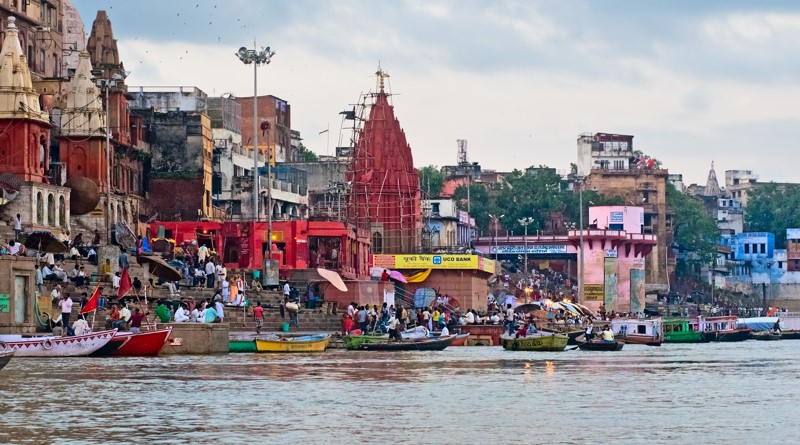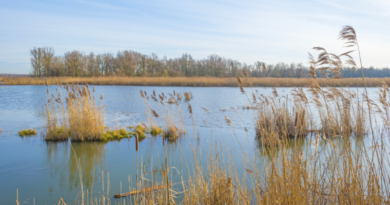World Bank to give another $400 mn for Namami Gange; first IBRD guarantee for wastewater treatment planned

The World Bank has announced additional funding to the tune of $400 million for the Centre’s ambitious Namami Gange programme even as the National Green Tribunal (NGT) has rapped the National Mission for Clean Ganga (NMCG) over its failure to control pollutants entering the river and other water bodies.
The new funding from the World Bank will finance the construction of expanded water networks and treatment facilities in order to stem pollution and strengthen river basin management. The overall amount also includes an amount for the first IBRD guarantee in the water sector in India.
The World Bank said the Second National Ganga River Basin Project (SNGRBP) will support the Indian Government’s Namami Gange programme and its long-term vision for controlling pollution in the river and restoring its water quality.
The Ganga basin covers about 25 per cent of India’s landmass and is home to about 500 million people. It is a crucial economic and environmental resource, contributing about 40 per cent of GDP and provides about 35 per cent of India’s surface water. Much of India’s irrigated land is in the region which is critical to water and food security.
The NMCG has been financing sewage treatment infrastructure in several towns and cities along the river and its tributaries.
“The government’s Namami Gange programme has revitalized India’s efforts to rejuvenating the Ganga,” said World Bank Country Director in India Junaid Ahmad.
“The first World Bank project helped build critical sewage infrastructure in 20 pollution hotspots along the river, and this project will help scale this up to the tributaries. It will also help government strengthen the institutions needed to manage a river basin as large and complex as the Ganga Basin.”
“The project will help expand the coverage of sewage treatment infrastructure to more towns in the Ganga basin and focus on making sure that these assets are operated and maintained efficiently in the long term,” said Xavier Chauvot de Beauchene, Lead Water & Sanitation Specialist and Upneet Singh, Water & Sanitation Specialist, both co-task team leaders (TTL) for the SNGRBP.
“The project will also help NMCG develop state-of-the-art tools to help manage the river basin more effectively.”
Over 80 per cent of the pollution load in the Ganga comes from untreated domestic wastewater from towns and cities along the river and its tributaries.
The SNGRBP will finance sewage networks and treatment plants in select urban areas to help control pollution discharges. These infrastructure investments and the jobs they will generate will also help India’s economic recovery from the COVID-19 crisis.
The project will be build on the hybrid annuity model (HAM) of public private partnership (PPP) introduced under the ongoing NGRBP, and which has become the solution of choice for sewage treatment investments in the Ganga basin.
Under the HAM model, the Centre pays a private operator 40 per cent of the capital cost to build a sewage treatment plant during the construction period; the remaining 60 per cent is paid as performance-linked payments over 15 years to ensure that the operator runs and maintains the plant efficiently.
The project will provide up to $19 million of IBRD payment guarantees to backstop the Government’s payment obligations for three HAM-PPP investments on the Ganga’s tributaries.
“This is the first-ever IBRD guarantee for wastewater treatment and the first IBRD guarantee in the water sector in India, and is expected to help free up public resources in the current economic situation,” said Satheesh Sundararajan, Senior Infrastructure Financing Specialist and co-TTL for the guarantee.
The second project comprises a loan of $381 million and a proposed guarantee in the amount of up to $19 million.
Meanwhile, the NGT has come down hard on the NMCG, saying its recent report regarding pollution control does not show any meaningful action.
The NMCG report just refers to certain meetings and field visits by officials of the Union Ministry Jal Shakti but does not mention compliance of law and rigorous steps expected against violators, the green tribunal said.
The implementation timelines are unsustainably long which are in complete defiance of orders of the Supreme Court and the seriousness of the problems, the NGT said.
“The Water Act was enacted 46 years ago and still discharge of pollution is taking place with impunity and inaction and tolerance by monitoring and statutory authorities has led to total lawlessness. Clear direction of the Supreme Court requiring prosecution of the erring officers and orders of this Tribunal requiring recovery of compensation on ‘polluter pays’ principle continue to be flagrantly violated,” NGT Chairperson Justice A K Goel said.
The green tribunal has again directed the Central Pollution Control Board (CPCB) and Secretary, Union Jal Shakti Ministry to monitor that no pollution is discharged in water bodies and any violation by local bodies or private persons are dealt with as per mandate of law without any deviation from timelines.
“The higher authorities must record failures in ACRs as already directed and recover compensation as per laid down scale. Every state/UT in the first instance must ensure that at least one polluted river stretch in each category is restored so as to meet all water quality standards up to bathing level. This may serve as a model for restoring the remaining stretches,” the bench said.



